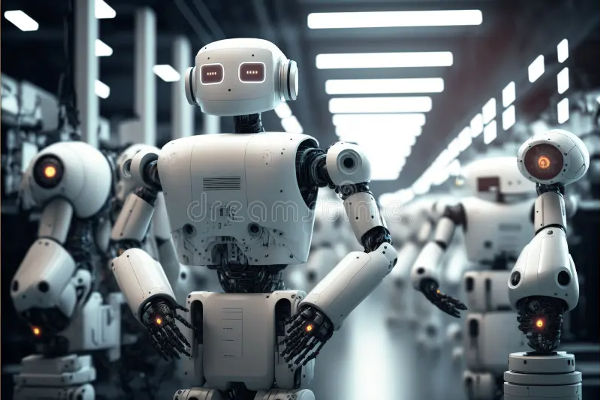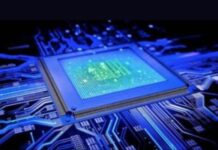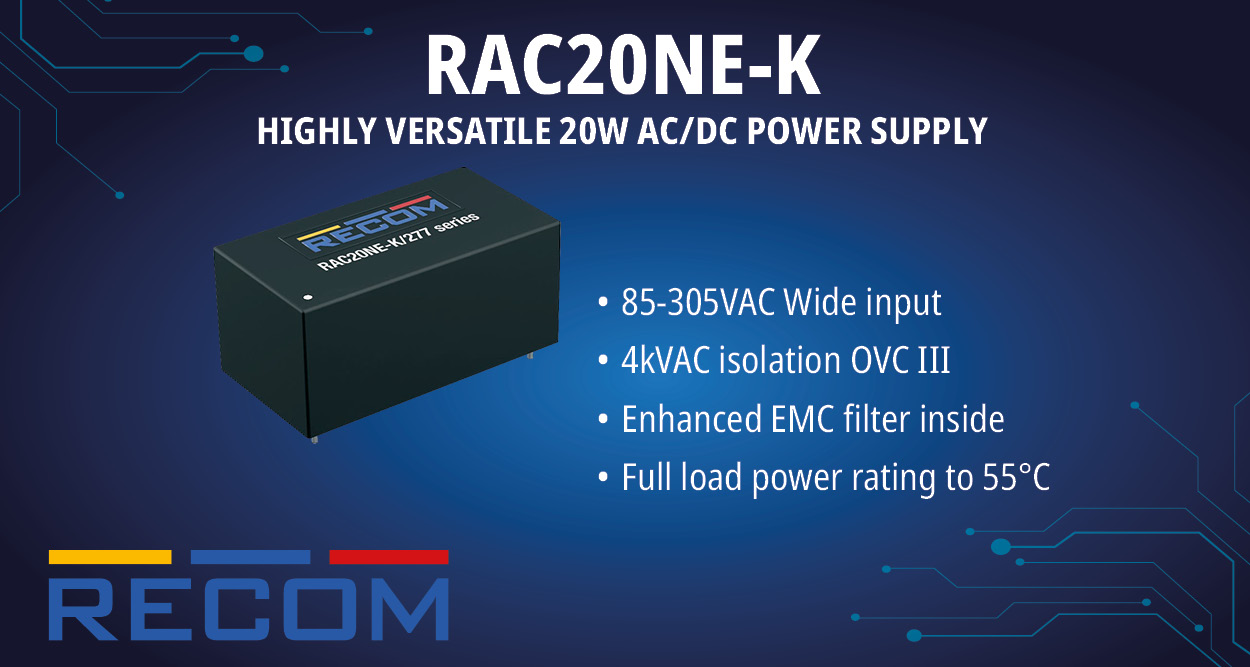The electronics industry is undergoing a seismic transformation, driven by the convergence of Artificial Intelligence (AI) and Machine-to-Machine (M2M) communication. These technologies are not just enhancing automation and efficiency but are also redefining how products are designed, manufactured, and monitored. From predictive analytics to smart manufacturing, AI and M2M are paving the way for a future where intelligent systems and autonomous operations become the norm. This story grub about how these technologies are reshaping the industry, the challenges they bring, and the opportunities they unlock.
AI: The Brain behind Automation and Predictive Analytics
AI is no longer a futuristic concept; it is now a critical enabler of innovation in the electronics industry. From product design to supply chain optimization, AI is streamlining processes and reducing inefficiencies. According to a report by ResearchGate, AI-powered tools are revolutionizing product development by enabling real-time collaboration and reducing errors in traditional methodologies. Predictive analytics, powered by AI, is enhancing manufacturing efficiency by detecting anomalies, predicting failures, and enabling timely maintenance, minimizing costly downtime.
Kaushal Vora, Senior Director of Marketing, Embedded Processing at Renesas Electronics Corporation, highlights this transformation, “AI-powered design tools like Altium 365 streamline product innovation by enabling seamless collaboration and reducing errors in traditional methodologies. Predictive analytics and Edge AI solutions enhance manufacturing efficiency by detecting anomalies and enabling timely maintenance.”
AI’s impact is particularly evident in predictive maintenance and quality control. A study by Device Insight reveals that AI-driven predictive maintenance can reduce unplanned downtime by up to 50% and extend equipment life by 20-40%. This ability to anticipate and address issues before they occur is a game-changer for manufacturers.
Pooja Jamwal, Head of Strategy and Corporate Development at Cyient DLM, adds, “Gen AI accelerates design and prototyping by reducing trial and error, enabling faster product launches and improving manufacturing efficiency.” This acceleration is critical in an industry where time-to-market can make or break a product’s success.
AI is also transforming supply chain management. Machine learning models are being used to forecast demand, optimize inventory levels, and reduce waste. This dynamic adjustment of production processes ensures that manufacturers can meet fluctuating demand while minimizing resource wastage. Robotic process automation (RPA) is enhancing precision in assembling electronic components, ensuring cost-effective production. AI-driven optimization is also improving energy consumption, reducing operational costs, and contributing to sustainability goals.
M2M: The Nervous System of Smart Manufacturing
While AI provides the intelligence, M2M communication acts as the nervous system, enabling seamless data exchange between devices. This synergy is critical for real-time monitoring and automation in smart manufacturing. According to FasterCapital, M2M communication enhances automation by enabling direct device communication, reducing manual intervention, and minimizing errors.
Sudhir Kunder, Chief Business Officer at DE-CIX India, highlights the role of connectivity in M2M-driven manufacturing, “DE-CIX supports M2M-driven manufacturing with low-latency, high-speed interconnections, crucial for real-time applications like autonomous robotics and quality control.”
Sarthak Upadhyay, Perception Architect at Addverb, adds, “Smart manufacturing systems leveraging M2M communication can automatically adjust production schedules and resource allocation based on real-time demand, leading to significantly improved operational efficiency.”
As M2M communication evolves, it will further enhance automation and predictive analytics, making manufacturing smarter and more efficient. The ability to remotely monitor and control industrial systems enhances manufacturing capability, making it more adaptive, efficient, and resilient in the face of changing demands.
M2M technology is also playing a pivotal role in large-scale applications like smart cities and monitoring systems. Sub-GHz wireless communication, Wi-Fi, Bluetooth, and NFC are enabling seamless connectivity across diverse environments. These advancements are not only improving operational efficiency but also paving the way for innovative applications in areas like energy management, public safety, and environmental monitoring.
Challenges in Integration: Technical, Operational, and Strategic
Despite their transformative potential, integrating AI and M2M into electronic systems and production workflows is not without challenges. A report by RSPScienceHub highlights that acquiring the right training data for AI models is a significant hurdle, with instrumentation and data collection accounting for over 80% of costs. Additionally, M2M systems face interoperability issues, particularly in ensuring seamless communication between legacy and modern systems.
Sombabu, Associated Vice President at Moschip Technologies Limited, explains, “The adoption of AI and M2M/IoT technologies offers immense benefits but comes with challenges such as hardware limitations, high infrastructure costs, and complex OT-IT integration.”
Parth Pangtey, Co-Founder of Bizaario Care, highlights the challenges specific to healthcare and biomedical engineering, “The integration of AI and M2M in biomedical engineering faces key challenges, including stringent regulatory approvals and interoperability issues with legacy EHR systems.”
Addressing these challenges requires strategic investment, workforce upskilling, and robust technological frameworks. Companies must navigate these hurdles to fully leverage the potential of AI and M2M technologies.
One of the key technical challenges is ensuring the compatibility of legacy systems with modern AI and M2M solutions. Many manufacturing facilities still rely on older equipment that lacks the computing power or connectivity required for AI-driven processing. Upgrading this infrastructure can be costly and time-consuming, particularly for small and medium-sized enterprises (SMEs).
Operational challenges include managing the vast amounts of data generated by AI and M2M systems. Ensuring data accuracy, consistency, and real-time processing is critical for effective decision-making. Additionally, organizations must address the skills gap by training their workforce to work with these advanced technologies.
Strategic challenges involve aligning AI and M2M initiatives with broader business goals. Companies must foster partnerships with technology providers, invest in research and development, and create a culture of innovation to stay competitive in the rapidly evolving electronics industry.
AI and M2M: Driving IoT, Smart Electronics, and Autonomous Systems
The convergence of AI and M2M is revolutionizing IoT, smart electronics, and autonomous systems. According to a LinkedIn analysis, the integration of AI and M2M is driving rapid growth in IoT applications, with the global IoT market projected to reach $1.6 trillion by 2025. This growth is fueled by advancements in edge computing, AI-driven predictive maintenance, and autonomous systems.
Darshil Shah, Founder and Director of TreadBinary, sums it up aptly, “AI is redefining the electronic industry by enabling real-time data analysis, allowing manufacturers to predict equipment failures, minimize downtime, and enhance quality control.”
Sudhir adds, “India’s AI in IoT market, valued at $10 billion in 2024, is set to reach $128 billion by 2034, fueled by real-time data needs and expanding IoT devices.”
These advancements are not just improving efficiency but are also enabling the creation of intelligent, autonomous ecosystems. AI-powered smart electronics, like smartphones and smartwatches, offer personalized experiences, while edge computing reduces latency for real-time decision-making. Autonomous systems leverage AI-driven computer vision and sensor fusion for self-driving vehicles, optimized logistics, and automated surveillance.
The integration of AI and M2M is also driving innovation in smart homes and cities. AI-enabled IoT devices are improving energy management, safety, and public services. For example, smart grids use AI to optimize energy distribution, while AI-powered surveillance systems enhance public safety by detecting and responding to potential threats in real-time.
In the healthcare sector, the convergence of AI, M2M, and the Internet of Medical Things (IoMT) is revolutionizing patient care. AI-powered nurse call systems, RFID-based asset tracking, and automated disinfection robots are optimizing hospital operations. 5G-enabled autonomous telesurgery platforms are breaking geographical barriers, enabling surgeons to perform procedures remotely with the help of AI-driven robotic arms.
Cybersecurity and Data Privacy
As AI and M2M technologies become more pervasive, cybersecurity and data privacy emerge as critical concerns. A report by RichWebs emphasizes that the integration of AI and M2M introduces new security risks, challenging traditional defense mechanisms. Protecting data end-to-end, both at rest and in transit, is essential to building trust in these systems.
Pooja agrees, “Robust cybersecurity measures, including encryption, firewalls, and intrusion detection, are crucial to safeguarding AI systems and M2M solutions, preventing data breaches, and ensuring their widespread adoption.”
Parth adds, “The integration of AI and M2M in healthcare informatics raises critical security challenges, requiring end-to-end encryption and compliance with regulations like GDPR and HIPAA.”
As industries continue to integrate these technologies, prioritizing security and compliance will be key to unlocking their full potential. The success of AI and M2M relies on trust, built through strong cybersecurity and data privacy measures.
One of the key challenges in securing AI and M2M systems is the sheer volume of data they generate and process. This data is often sensitive and must be protected from unauthorized access, tampering, and theft. Encryption, anonymization, and secure communication protocols are essential for safeguarding data integrity and confidentiality.
Regulatory compliance is another critical aspect of cybersecurity. Organizations must adhere to regulations like the General Data Protection Regulation (GDPR), the California Consumer Privacy Act (CCPA), and the Health Insurance Portability and Accountability Act (HIPAA) to ensure the privacy and security of user data. Regular audits, multi-layered security, and transparency in data handling practices are essential for building trust with users and stakeholders.
The Road Ahead: A Smarter, More Connected Future
The integration of AI and M2M is not just transforming the electronics industry; it is reshaping the way we live and work. From smart homes and cities to autonomous vehicles and intelligent healthcare systems, these technologies are driving innovation across sectors. According to a report by FasterCapital, the global M2M economy is expected to grow exponentially, driven by advancements in AI and IoT.
Sarthak concludes, “As industries continue to integrate emerging technologies into their operations, there is an imperative need for robust security and data privacy policies. Organizations must constantly update their security practices and strategically implement AI and M2M solutions for utilizing full technological potential.”
The journey is not without challenges, but with strategic investments, robust security measures, and a focus on innovation, the future of the electronics industry looks brighter than ever. The collaboration between AI and M2M will continue to unlock new possibilities, making our world smarter, more efficient, and more connected.
In conclusion, the synergy between AI and M2M is not just a technological evolution; it is a revolution that is redefining the electronics industry. With leaders like Kaushal, Pooja, Sudhir, Sombabu, Darshil, Parth, and Sarthak driving this transformation, the industry is poised for a future where intelligence and connectivity are at the heart of every innovation.
















